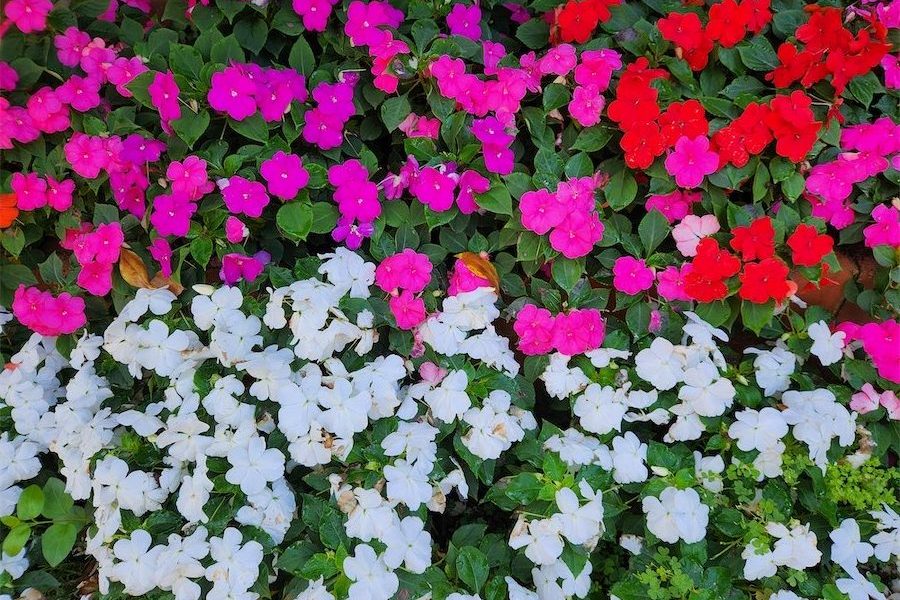THIS week’s feature plant is Hebe from NZ, in flower in many gardens at present. The Hebe genus is classed as NZ’s horticultural treasure trove. In the UK, the Royal Horticultural Society publish each year “The Plant Finder” book, which lists more than 85,000 plants and, more importantly, from which garden centres and nurseries they can be purchased.

I mention this as they list a staggering 535 varieties of Hebe, such is the popularity of this plant over there. Equally, it is becoming a favourite among gardeners here.
The Hebe, or Veronica as the genus was originally known, was discovered by naturalists Joseph Banks and Daniel Solander, who accompanied Capt James Cook. The discovery was made on Cook’s first voyage to NZ from 1769 to 1771. Although interestingly, the first Hebe brought into cultivation was from the Falkland Islands in 1776. The rest is history.
HEBES range from varieties growing to just 60 centimetres to those up to two metres.
They look great planted in groups of three, five or seven, or planted as a hedge, as illustrated here. It blends perfectly with other plants such as Daphne. The range of leaf shapes and colours, from grey to dark green, or variegated green and yellow, are attractive in their own right.
One of the largest mass plantings here of Hebes was undertaken by the National Capital Authority in the central beds of Anzac Parade. These represent the “NZ” part of Anzac. Eleven thousand “Otari White” were planted, the pink buds opening to pure-white flowers.
Here are a few suggestions that I know from experience grow well in this district:
-
“La Seduisante”, although sounding French, was first recorded in an English nursery in 1906. Its deep-violet-purple flowers are set off with dark green leaves, growing from one to 1.8 metres tall.
-
“Marie Antoinette” with red-purple flowers, a low shrub to 75cm tall. This plant is an ideal alternative to Buxus sempervirens, or box plant, with the advantage of flowering over a long period.
-
Possibly one of the most popular is “Inspiration”, a neat compact shrub with petunia-purple flowers. This is a good coastal plant surviving salt spray and salt-laden winds.
-
“Icing Sugar” is just as delicious as the name. The rose-pink flower buds open to the same colour and then change to white giving them a most attractive appearance.
-
“Oratia Beauty” also has pink flowers changing to white, to 75-centimetres tall – this is another good low-hedge plant.
These few varieties are just to tempt you with a hardy plant for Canberra, not forgetting Queanbeyan gardeners. Check out other varieties at your local garden centre. “Hebes”, by Lawrie Metcalf, Timber Press, 2006, is the bible on these super plants. Check availability online.
WHILE I worry about the demise of our street trees here, other places have the same problem. Parks, gardens and trees are vital to make town centres inviting, yet are too often overlooked and are now the subject of new government guidelines to town planners in the UK.
Streets, especially high streets, have reached a crisis point and action is needed. Suggestions include communities growing “pocket parks”, with perhaps wildflower gardens, while sites await development. This could be a good idea when one sees overgrown sites such as demolished service stations disfiguring our suburbs here.
Planting time almost here
WITH barely two weeks of summer left, I remind readers of the adage: “autumn time is planting time”:
-
Prepare ground for shrubs and bulbs. Do not have the soil too rich, especially for bulbs. For shrubs, prepare the ground to at least 30cm deep.
-
Consider now where to plant shade or blossom trees, giving them plenty of room to grow.
-
Do you know where the underground services are on your block? “Dial before you dig” is recommended before you start preparing deep holes for trees.
-
Consider the contents of potting mixes and where the materials come from, such as peat from endangered peat bogs.
- Do you really need to buy potting mixes with chemical fertilisers already added? Are those fertilisers ideal for the particular plants you intend to grow?
Who can be trusted?
In a world of spin and confusion, there’s never been a more important time to support independent journalism in Canberra.
If you trust our work online and want to enforce the power of independent voices, I invite you to make a small contribution.
Every dollar of support is invested back into our journalism to help keep citynews.com.au strong and free.
Thank you,
Ian Meikle, editor




Leave a Reply